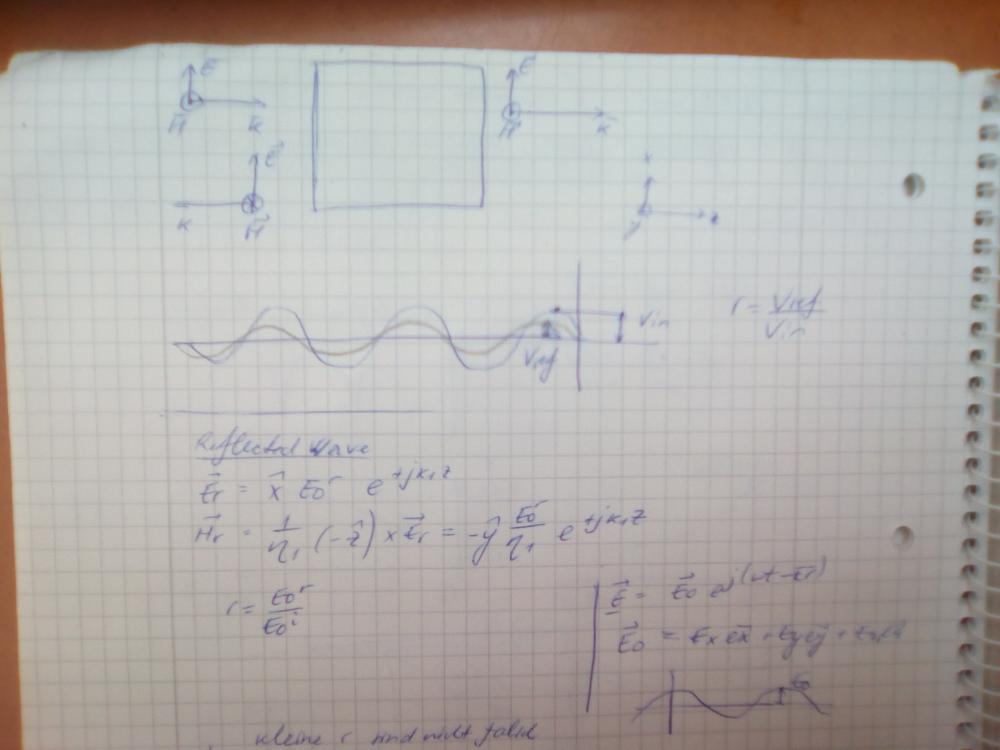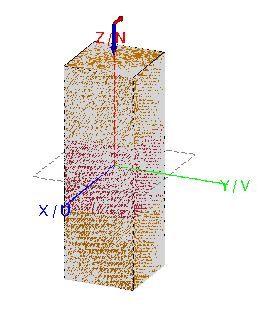What are the reasons, why the reflected coefficient (Er/Ei) is too law?
Can it be because of reflection coefficient is per definition the maximum amlitude of Er devided to maximum amplitude of Ei and my scattered near field at that point is not necessarily equal to the max. Amplitude. (i have drawn it in the picture with Vin and Vref)
------
I calculated only scattered near field.
r - reflected, i -incident
I have three mediums, the red one in the middle has the eff. permitivity of 18 at GHz, the 2 on the sides the eff. permitivity of 1(air)
according to Fresnel Equations
r = (n2 - n1) / (n2 + n1) = 0.8947
if i just take my nearfield data at the boundary and divide it with 1V/m incident field, i become r = 0.2
<?xml version="1.0" encoding="UTF-8"?>
<?xml version="1.0" encoding="UTF-8"?>